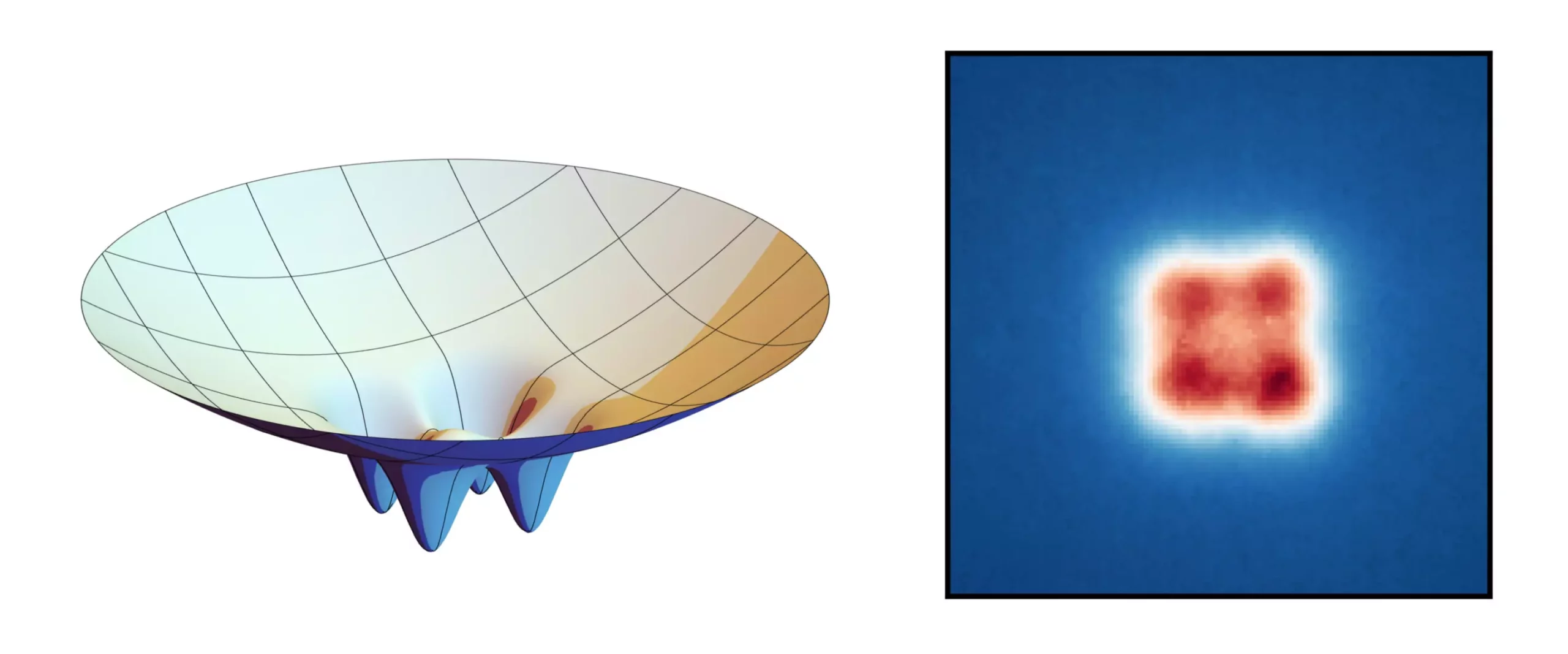Recent breakthroughs in the study of light at the molecular level have revealed astonishing potentials for communication and technology. Researchers at the University of Bonn have successfully demonstrated the ability to manipulate light particles, resulting in the formation of a unique entity dubbed a “super photon.” This advanced state of light, achieved by cooling a multitude of photons to near absolute zero while confining them within a specialized environment, allows these particles to become indistinguishable and behave as a collective unit rather than individual entities. In technical terms, this phenomenon is known as Bose-Einstein condensation, a state observed under extreme conditions.
The method employed by the Bonn researchers showcases the use of “tiny nano molds” to tailor the characteristics of the Bose-Einstein condensate. These molds enable the creation of intricate lattice structures within the condensate, specifically in a four-point configuration that resembles a square. Such structured light arrangements open up potential applications in secure information exchange, setting the stage for developments in quantum communication, particularly in contexts where confidentiality is paramount.
As light particles—when initially created—oscillate between reflective surfaces, they exhibit considerable warmth due to their kinetic energy. However, the interaction with surrounding dye molecules facilitates an essential cooling process. Through repeated collisions, the photons lose energy and eventually enter the condensate state. This surprising transformation points to the intricate physics underlying light behavior at microscopic levels.
The research team, led by physicist Andreas Redmann, has pushed the boundaries of understanding by intentionally introducing small indentations into the reflective surfaces that contain the photons. This ingenious design has significant implications: it creates confined “pockets” for the condensate to occupy, thereby shaping the light in a controlled fashion. The analogy of filling a bowl of water into multiple cups illustrates this concept. Unlike water which may simply spill over, the unique properties of the super photon allow light particles to maintain coherence across the entire lattice structure, thus ensuring that it remains a singular entity rather than fragmenting into smaller, independent portions.
One of the fascinating aspects of this work lies in its potential to foster quantum entanglement between the arranged light particles. When photons within this structure experience a change in state, it impacts their counterparts across the connected lattice. This form of quantum correlation is vital for applications such as secure communication systems, where the transmission of sensitive information can be safeguarded against interception or unauthorized access.
The implications for such advancements are staggering; by innovatively adjusting the reflective surfaces to create more lattice sites—spanning 20, 30, or potentially far more—the range of participants able to engage in secure communications increases dramatically. Redmann’s insights point to a future where this technology could enhance discussions, negotiations, and sensitive transactions, ensuring unprecedented security levels.
The findings of the Bonn University researchers pave a pathway not only for theoretical exploration but also for practical applications in various fields, including telecommunications and information technology. As they have demonstrated the feasibility of creating specific patterns for condensed light, the horizon for utilizing these forms of light in real-world applications rapidly expands.
Looking ahead, further investigations into the manipulation of light particles can yield tools for diverse industries, where speed and security are of the essence. The interdisciplinary collaboration among physicists, engineers, and computer scientists is necessary to transition these remarkable scientific advancements from the laboratory into impactful applications. With every new experiment, the promise of revolutionizing how we communicate and process information continues to grow, challenging the limits of what is conceivable in the realm of quantum physics.


Leave a Reply